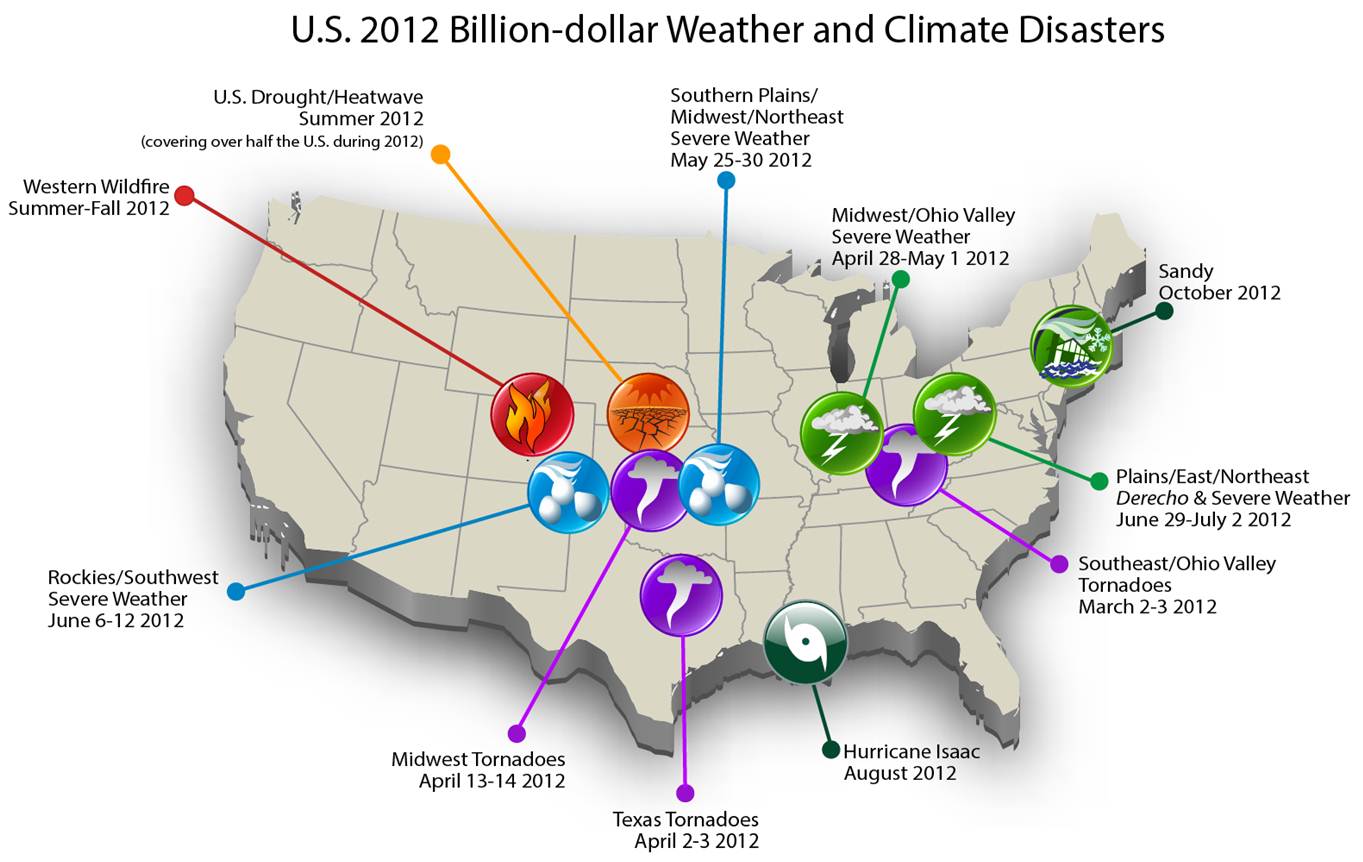2012 Second Costliest Year for Natural Disasters

Hurricane Sandy and an extensive drought made 2012 the United States' second costliest year for natural disasters since 1980, federal officials said today (June 13).
Weather and climate disasters racked up $110 billion in damages across the country last year, according to a report released today by the National Climate Data Center (NCDC).
There were 11 events in 2012 that each incurred at least $1 billion in damages, including spring tornado outbreaks in the Midwest and Texas, a derecho that plowed from the Plains to the Northeast, and the yearlong drought and its associated heatwaves and wildfires that burned more than 9.2 million acres, mostly in the West.
All told, more than 300 people were killed in these 11 extreme weather events — 159 of those lives were claimed by Sandy.
Sandy by far was the most costly event of the year, with $65 billion in damages. The gigantic storm, which at one point had tropical storm-force winds extending almost 500 miles (800 kilometers) from its center, made landfall on the Jersey Shore on Oct. 29. It caused a record storm surge, historic flooding and widespread power outages along a huge stretch of the East Coast.
Last year's severe, yearlong drought, meanwhile, was estimated to have cost about $30 billion in damages, much of it due to widespread harvest failure. For most of 2012, more than half the country was affected by the drought, which covered the largest area of any drought since the 1930s, according to the NCDC's report.
The costliest year on record for natural disasters was 2005 — the year Hurricane Katrina devastated New Orleans and the Gulf — with $160 billion in damages. According to the NCDC, 2012 also ranks second for number of billion-dollar disasters, just behind 2011, which saw 14 such events.
Get the world’s most fascinating discoveries delivered straight to your inbox.
Follow LiveScience on Twitter @livescience. We're also on Facebook & Google+.



